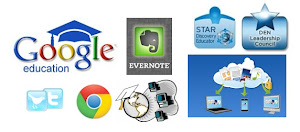
Written by Jonathan Trent— Writer for NextUC.com, providing expertise in everything from Microsoft Lync to video conferencing to online collaboration software.
As technology advances, a greater number of countries are embracing the use of it in classrooms. While the U.S. is moving in that direction there seems to be some hesitation in deciding what technology should be used. Other countries are focusing on how to integrate it while we determine if we should. Here is a list of four ways technology is changing the face of education.
More Accurate Assessment
Traditionally assessments are given to determine a student’s proficiency in a subject. The problem with previous assessment styles is they are dependent on a students testing ability. Some students can retain enough information to answer questions accurately while not fully understanding the meaning of the information or lacking a working knowledge of the concept. While others who may understand fully lack the skills to explain their knowledge effectively. New technology allows teachers to give assessments where students have to work through multiple steps of a problem so the teacher is able to see their thought process rather than just coming up with an answer. This way, teachers can access a child’s full understanding and see clearly where the breakdown in understanding is.
Clear, Realistic Simulations and Models
Clear, Realistic Simulations and Models
While some things can easily be explained in a classroom or by using textbooks, some concepts are easier to understand if the children can see them. When explaining things like DNA structure or how molecules interact with other molecules technology can give you a visual that we have never had before. Digital simulations are most useful in explaining concepts that are too big or too small, or processes that happen too slowly or too quickly to demonstrate in a traditional classroom.
The World At Their Fingertips
The World At Their Fingertips
Technology is providing a way for students to experience the world in ways that where previously not available to them, without expensive travel. They are able to visit historic sites virtually and learn about how people live in other parts of the world. Foreign languages can be learned from a native speaker by way of an easy video chat.
Class Size
Class Size
The use of technology in classrooms may be the answer to the problem with class size. As more classrooms move towards fully integrated technology programs, teachers are able to help more students. When children are actively engaged in what they are learning through online programs, the teacher is not the only source of information in the classroom. Parents also have greater access to their child’s progress and are better able to support the schools efforts from home.
Related:
Differentiating with Web 2.0 Technologies
Technology I use Everyday as an Educator
Unfettered by Stuff - or "Why I don't lug stuff home every night"
Google for Educators
Evernote for Educators